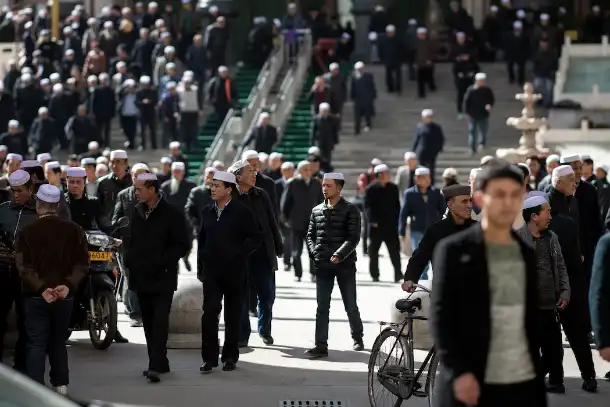What are the Zionist obstacles to the reconstruction of Gaza?

Coinciding
with the Egyptian Sharm El-Sheikh Summit and the signing of the ceasefire
agreement in the Gaza Strip — attended by U.S. President Donald Trump and a
large number of world leaders — another equally important meeting was held in
London on October 13, 2025. The meeting brought together dozens of senior
officials from the Middle East and the European Union to discuss the
reconstruction of the Gaza Strip.
The
British Foreign Office brought together senior officials and major
international financial institutions — led by the World Bank and the European
Bank for Reconstruction and Development — in a broad international conference
held away from the spotlight. The meeting focused on discussing the “day after”
the war on Gaza, with one of the main topics being the reconstruction of the
Strip — a process that could take years to complete and is estimated to cost
more than $50 billion, with some assessments putting the figure at over $80
billion.
Continuation of the war after the
agreement
Despite
the international and regional preparations for the reconstruction of Gaza,
there remain numerous “Israeli” obstacles hindering this vital step, which
would restore hope and life to the Palestinian people in the Gaza Strip. Chief
among these obstacles is the uncertainty surrounding the next phase of prisoner
releases, as well as the occupation’s refusal to reopen the Rafah crossing
until all the bodies of captives held by “Hamas” are returned. Additionally,
Israel has linked the entry of infrastructure materials into the Strip to the
imposition of new educational and religious policies on the Palestinians.
Zionist
plans to erase the concept of “resistance” from educational and religious
institutions in the Gaza Strip
With the release of the Zionist captives, Zionist Defense
Minister Yisrael Katz stressed that the war in Gaza is not yet over, and that
the army will continue destroying Hamas tunnels. This means that military
forces will remain present in Gaza and will not withdraw in accordance with
President Trump’s plan — a clear breach by Tel Aviv of the ceasefire agreement
concerning the Strip. This severely hinders the start of the reconstruction and
rebuilding process in Gaza.
Zionist voices calling for the continuation of the war on the
Gaza Strip have grown louder despite the signing of the agreement — especially
after only four of the 28 bodies of “Israeli” captives that were to be returned
were handed over to Tel Aviv. This issue was widely reported and highlighted by
Hebrew media outlets on October 13 and 14, 2025, particularly by the Israel
Broadcasting Authority and the Israeli Army Radio.
For its part, the Hebrew newspaper Yedioth Ahronoth, on
October 12, linked the reconstruction of the Gaza Strip to the return of the
last remains of the captives held in Gaza. The paper noted that Zionist
estimates indicate that some of the slain soldiers are still buried
underground. To fully implement the terms of the ceasefire agreement based on
Trump’s plan, “Hamas” must return all the bodies and assist the international
force — which is to be formed to implement the Gaza agreement — in locating the
remains of those captives killed over the past two years and handing them over
to Tel Aviv.
The newspaper claimed that “Hamas” is deliberately hiding the
bodies of Zionist captives it holds in the Gaza Strip as a bargaining chip for
the Palestinian movement. This, the report argued, prompts the entity to block
Gaza’s reconstruction, obstruct the entry of essential infrastructure materials,
and prevent the entry of caravans, in addition to completely prohibiting
excavation work.
In its report published on October 13 — the day the Zionist
captives were released from Hamas’s custody — the same newspaper predicted that
the occupation authorities would prevent the entry of essential infrastructure
materials and caravans as well. In other words, it suggested that they would
not proceed with implementing the terms of Trump’s plan concerning the
reconstruction of Gaza from the outset, until all the bodies of the “Israeli”
captives are recovered.
The Hebrew economic newspaper Calcalist agreed with
what Yedioth Ahronoth had reported — that “Israel” would provide the
proposed international force, tasked with implementing the ceasefire agreement,
with maps and locations where bodies are likely buried underground inside the
Gaza Strip. “Tel Aviv,” the paper noted, has made the return of these remains a
precondition for allowing the entry of construction and essential
infrastructure materials for Gaza’s reconstruction.
This is despite “Hamas” previously acknowledging the
difficulty of locating all 28 bodies at once. Meanwhile, the Israel
Broadcasting Authority reported on October 13 that restrictions have been
imposed on Hamas’s efforts to search for the remains of the “Israeli” captives
in Gaza.
The Hebrew channel i24News shared the same view,
linking the entry of essential infrastructure materials for Gaza’s
reconstruction — such as cement, tractors, and heavy equipment used for
excavation and construction — to the return of the bodies of captives held by
“Hamas.” The channel explained that the agreement with “Hamas” allows only the
entry of humanitarian aid, including food, fuel, cooking gas, and fuel
designated for hospitals and basic infrastructure, while prohibiting the entry
of reconstruction materials — one of the main obstacles to Gaza’s
reconstruction.
Programs to suppress the resistance
However, the same channel noted on October 12 that the Sharm
El-Sheikh Summit (held on Monday, October 13) was convened to raise funds for
the reconstruction of Gaza and to explore ways to channel these funds into the
Strip. It also predicted that another summit would be held within days to
discuss the details of Gaza’s reconstruction. Furthermore, the Sharm El-Sheikh
Summit was said to be addressing the issue of repairing Gaza’s electricity
infrastructure and examining how the proposed international force could
participate in completing or implementing parts of Trump’s plan — which
includes provisions allowing the reconstruction of the Strip and the entry of
essential building materials.
Institute for National Security Studies: “Israel” sets political
and security conditions for reconstruction
The National Security Studies Center offered a different view,
explaining that Israel’s approval of international participation in Gaza’s
reconstruction must remain conditional on promoting a comprehensive Zionist
program aimed at combating what it calls “terrorism” within the Strip’s
educational, religious, and charitable institutions. In other words, a Zionist
program intended to rein in the resistance and extinguish the idea of
resistance from curricula and religious bodies — an attempt to abort and erase
resistance from the thought, faith, and creed of Gaza’s Palestinian citizens —
while acknowledging that “resistance is an idea, and an idea does not die.”
The same center published another study on U.S. President
Trump’s plan and the ceasefire in Gaza on September 1, which indicated that
“Israel” may condition the reconstruction of the Strip on implementing
fundamental reforms within the Palestinian Authority. It also suggested that
Israel would require unrestricted military access to and movement within the
Strip, allowing its army to “purge Gaza” at any time under the pretext of
combating “terrorism” — or, more accurately, suppressing legitimate resistance.
Hence, there are several obstacles that “Israel” places before
the reconstruction of Gaza. The most significant of these are the demand for
the return of all the bodies of captives held by “Hamas” in the Strip, the
imposition of changes to Palestinian educational curricula and religious
institutions, the detachment of the issue from any internal reforms within the
Palestinian Authority, and the refusal to link Gaza’s reconstruction to the
establishment of a Palestinian state.
_____________________________________________
You may also like:
When Injustice Overshadows Justice: The Cases of the Palestinians and the Rohingya
Is There Peace?.. 720 Days Without the Day After
Rebuilding Gaza: 7 Facts from the Perspective of Steadfast Resistance
War Is Over, Yet Serious Challenges Still Lie Ahead










